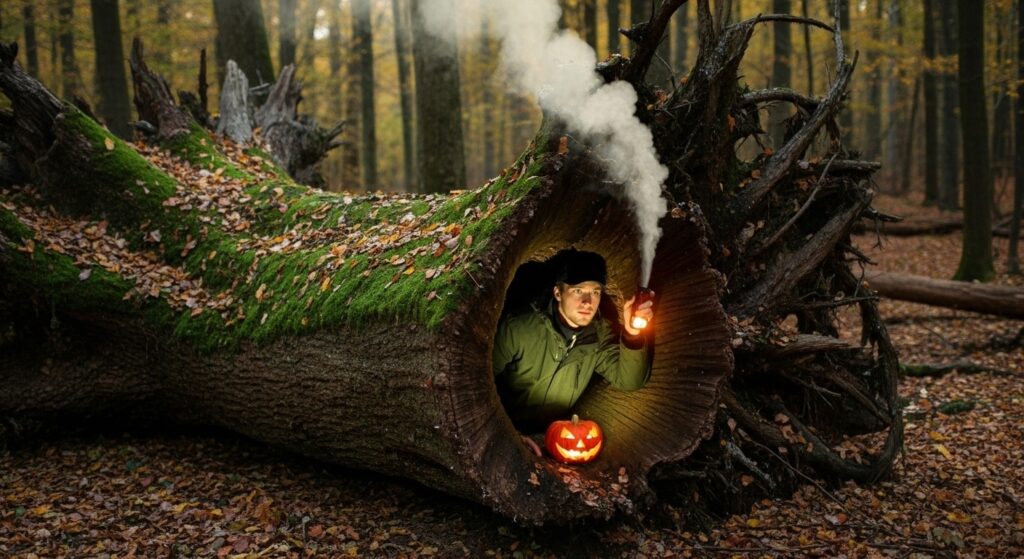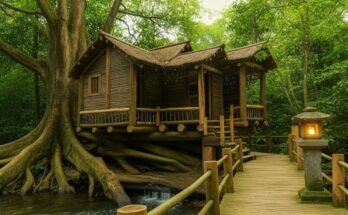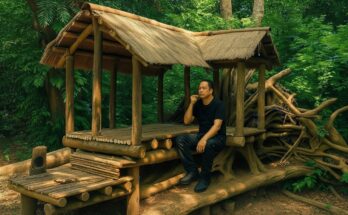I came across a huge uprooted spruce root deep in the forest and immediately saw its potential as a natural shelter base. The shape and texture of this massive root made it perfect for creating a warm and cozy hollow shelter. I knew I could use it as a natural cave, blending into the forest environment to stay hidden and protected from the elements.

I began by clearing and preparing the space inside the root, making it comfortable and safe for shelter. Using my bushcraft skills, I reinforced the hollow with natural materials like sticks, moss, and leaves to insulate and protect against wind and rain. This process took patience and attention to detail to maintain the natural camouflage and structural integrity of the shelter.
Inside the hollow, I focused on making the space warm and livable, perfect for survival situations. I used whatever natural resources I could find around me to enhance insulation and create a cozy atmosphere. The shelter stayed dry and warm thanks to the natural shape of the root combined with the layering I added.
Building this unique secret cave was a rewarding experience that showcased the beauty of working with nature. It highlighted how even fallen trees and roots can become valuable shelters with the right skills and creativity. I hope my work inspires others to look for hidden opportunities in the wilderness to build their own survival havens.I found a huge uprooted spruce root deep in the forest, and immediately recognized it as an ideal natural foundation for a shelter. The unique shape and texture of the root offered a perfect hollow space that could serve as a warm and cozy hideout. It provided excellent natural camouflage, helping me stay protected from the elements and unseen by others.
I carefully cleared and prepared the hollow inside the root, working with natural materials like moss, sticks, and leaves to make it comfortable and insulated. Using my bushcraft skills, I reinforced the shelter while maintaining its integration with the forest surroundings. This took patience and finesse to create a sturdy, weather-resistant space without disrupting the natural environment.
Inside, I focused on maximizing warmth and dryness to make the shelter livable in survival conditions. The combination of the root’s natural structure and the insulating layers ensured a cozy, protected space. This shelter gave me a safe spot to rest while deeply connected to the forest around me.


